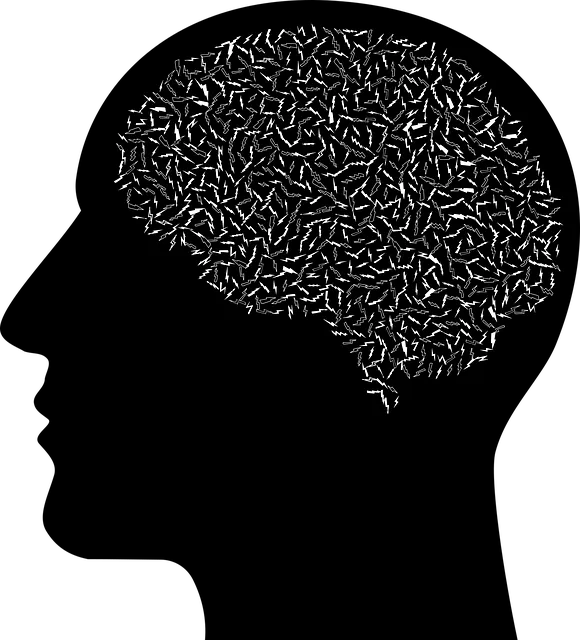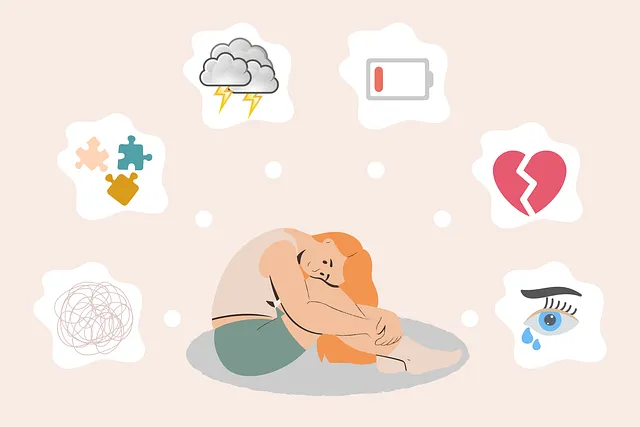In Castle Rock, risk assessment and proactive mental health management are key. By identifying triggers, evaluating vulnerabilities, and developing personalized coping strategies, residents can take charge of their well-being. Accessing mental health services through Kaiser is crucial for harm minimization, with programs normalizing conversations around mental health and empowering individuals to manage stress and anxiety effectively. This holistic approach, including self-awareness exercises and mindfulness meditation, has shown significant positive outcomes. Implementing a robust harm minimization plan involves active listening, data collection, collaboration with local organizations, and leveraging Kaiser's online resources. Effective communication of these initiatives is vital for creating a supportive environment for mental health well-being in Castle Rock.
Risk assessment and harm minimization planning are critical components in ensuring effective mental healthcare. This article delves into these essential strategies, providing a comprehensive guide for professionals and individuals alike. We explore ‘Understanding Risk Assessment’ as the cornerstone of safeguarding mental well-being. Furthermore, we highlight the significant role of harm minimization, using Castle Rock and Kaiser as case studies to illustrate how to unlock access to mental health services. Learn practical steps for developing and implementing a harm minimization plan, including strategies for maintaining a supportive environment.
- Understanding Risk Assessment: A Foundation for Safeguarding Mental Health
- The Role of Harm Minimization in Mental Healthcare
- Castle Rock and Kaiser: Unlocking Access to Mental Health Services
- Developing a Comprehensive Harm Minimization Plan
- Practical Steps to Implement and Maintain Your Plan
Understanding Risk Assessment: A Foundation for Safeguarding Mental Health

Risk assessment is a cornerstone in safeguarding mental health, especially for individuals navigating challenging circumstances. By understanding risk factors and potential harms, Castle Rock residents can proactively seek support and implement harm minimization strategies. This process involves identifying triggers, evaluating vulnerabilities, and developing coping mechanisms tailored to individual needs.
For those seeking mental health services through Kaiser or exploring self-care practices as part of the Mental Wellness Podcast Series Production, risk assessment provides a framework. It empowers individuals to take charge of their well-being by recognizing early warning signs, whether it’s changes in mood or emerging self-care practices. Through this proactive approach, Castle Rock folks can ensure they receive the necessary support and resources for maintaining mental wellness.
The Role of Harm Minimization in Mental Healthcare

In the mental healthcare landscape, harm minimization plays a pivotal role in ensuring patient safety and well-being. At Castle Rock, for instance, understanding how to get mental health services through Kaiser is crucial for effective harm reduction. This involves integrating various strategies that go beyond traditional therapy sessions. Mental health professionals in this context focus on empowering individuals with self-awareness exercises and stress reduction methods, enabling them to proactively manage their conditions.
By incorporating mental health education programs designed with harm minimization in mind, patients gain valuable insights into recognizing early warning signs of distress. This proactive approach not only equips individuals with the knowledge to make informed decisions but also fosters a sense of autonomy in their mental health journey. Ultimately, these comprehensive strategies contribute to enhancing overall resilience and mitigating potential risks associated with mental health conditions.
Castle Rock and Kaiser: Unlocking Access to Mental Health Services

Castle Rock, a community often overshadowed by urban centers, is witnessing a shift in mental health access through innovative partnerships with organizations like Kaiser. Residents are now benefitting from integrated healthcare solutions that seamlessly blend medical services with therapeutic practices. One key strategy involves Self-Awareness Exercises and Mental Health Education Programs Design tailored to the unique needs of Castle Rock’s population. By incorporating these initiatives, Kaiser aims to normalize conversations around mental well-being and empower individuals to take charge of their psychological health.
Furthermore, integrating Mindfulness Meditation into treatment plans has shown promise in reducing anxiety and stress levels among community members. This holistic approach ensures that mental health services are not only accessible but also culturally sensitive and comprehensive. Through such initiatives, Kaiser is unlocking new avenues for Castle Rock residents to prioritize and improve their mental health, ultimately fostering a more resilient and connected community.
Developing a Comprehensive Harm Minimization Plan

Developing a comprehensive harm minimization plan is akin to fortifying Castle Rock against potential threats. It involves a multi-faceted approach that transcends mere reaction; it’s about proactive protection and swift intervention. At its core, such a plan must include accessible Mental Health Education Programs designed to equip individuals with the knowledge and skills to recognize signs of distress in themselves and others.
By integrating Empathy Building Strategies within these programs, communities can foster an environment where individuals feel understood and supported. This is further enhanced through Stress Reduction Methods tailored to diverse needs, ensuring that everyone has a path towards resilience and well-being. Through these comprehensive measures, inspired by the landscape of Kaiser’s mental health services accessibility, communities can effectively navigate challenges and minimize potential harms, much like a strategic defense system protects its stronghold.
Practical Steps to Implement and Maintain Your Plan

Implementing a comprehensive risk assessment and harm minimization plan is an ongoing process that requires dedication and commitment. Here are practical steps to ensure your Castle Rock community’s well-being:
1. Assess Risks Regularly: Identify potential hazards, including mental health concerns, through active listening and data collection. Engage with local organizations and access resources like Kaiser’s online services to understand the unique needs of your area. Regular reviews allow for timely adjustments, ensuring the plan remains effective in addressing emerging challenges.
2. Develop Multi-Faceted Strategies: Create a holistic approach that combines various initiatives. Promote public awareness campaigns on mental health, encourage inner strength development through community programs, and foster open conversations using Mental Wellness Journaling Exercises. These strategies can be effectively communicated to residents, schools, and local businesses, fostering a supportive environment.
Risk assessment and harm minimization planning are crucial components in ensuring access to quality mental healthcare, especially for vulnerable populations. By understanding risk factors and implementing comprehensive strategies, such as the successful models demonstrated by Castle Rock and Kaiser, we can significantly enhance service delivery. This includes unlocking access through innovative partnerships and adopting practical steps to maintain a safe environment. For individuals seeking mental health support, these approaches serve as a guide to navigating their journey, ultimately fostering better outcomes and improved well-being.






